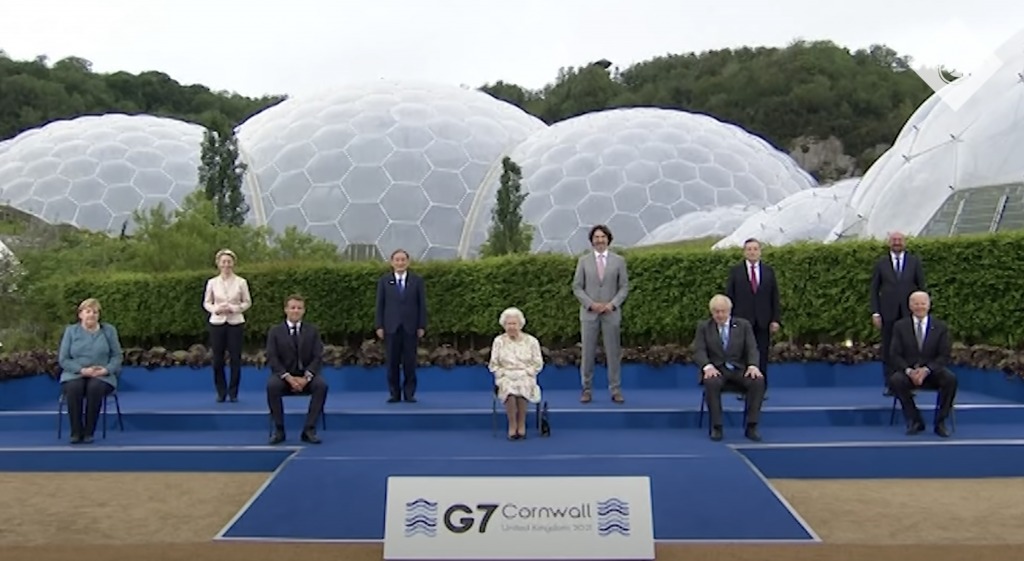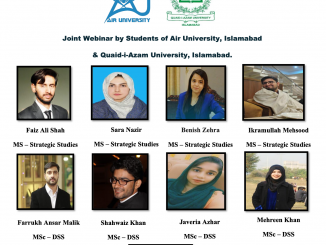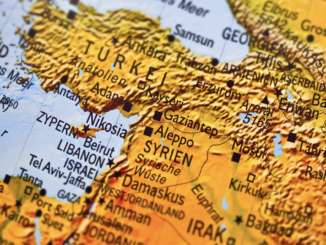
The 21st century Thucydides trap easily explains the way the emerging global power poses a threat to the interests of an already existed great power in the world order thereby galvanizing the great power rivalry. The gradual increase in Chinese soft power as a result of the different revolutions spreading over different phases has caused the emergence of China as a key player in the international politico-economic arena thereby posing a threat to the position, global leadership, and interests of the rival major power especially those of the US. Thus, the United States of America has been adopting every possible measure over the past few years to limit the increasing Chinese influence to maintain its global leadership position.
While following the policy to contain China, the United States of America initially adopted a Containment policy as known as Pivot Asia policy with a purpose to encircle China via coming into contracts, alliances, military bases, and economic support to the hostile neighbours of China. Washington formed the joined Pacific Asia Partnership and along with the ten ASEAN countries and Japan to boost up cooperation in a plethora of areas. The sole purpose of the partnership was to contain China while encircling it. Similarly the United States of America began shaking hands with the other three major regional rivals of China: Japan, India, and Australia, under the banner of QUAD with a purpose of impeding China’s development. Washington has been attempting to collaborate militarily, economically, and diplomatically with New Delhi for the past one and a half decades in an attempt to settle its Chinese issue.
Washington has also adopted military tactics as it has its existence in the Asia Pacific region with a number of military lands, aerial and naval bases incentivised by a purpose to have a vigilant look over the regional geopolitics especially the communist oriented. Moreover, it has also been using the stick of human rights protection to hit China via unveiling and rebuking Beijing for its gross human rights violations in Hong Kong and Uighurs.
The United States of America adopted history’s costly trade war with China via putting high tariffs on Chinese goods exported to the US which retaliated the same action by Beijing. The tariffs war shook the global economy too. Washington, on the other hand, consistently failed catastrophically in this vicinity for a long period of time. Recently, the ground of war has shifted to tech world where Beijing seems to be leading once again.
While maintaining the same agenda of limiting Beijing’s increasing influence, the Biden administration has begun to revert to the pro-Trump era’s tactics of banding together with allies against China. Biden took off to England to attend the meeting of G7 which was going to be held there at the South- Western England. Though the meeting discussed a plethora of multilateral issues, its main focus remained over the ways to contain the growing influence of China, especially under its Belt and Road Initiative. The participants were agreed upon the launching of a joint infrastructure program worth $40tr to compete with the BRI.
The Chinese Belt Road and Road Initiative are also known as the One Belt One Road Initiative, is an infrastructure development project passing through a number of countries across Asia, the Middle East, Africa, and part of Europe. It connects more than 60 countries at the cost of $200bn. The project encompasses railways tracks, roads, optic fibres, and marine connectivity. The project is much pregnant with benefits for the cross-continental connectivity, trade, infrastructure development, energy and employment opportunities, and the overall economic growth in addition to the improvement in diplomatic relations.
Similarly, the BRI is pulling money from Beijing and laying the groundwork for Beijing’s involvement in the nations it traverses. China provides loans to the countries which are signatories of the said project. The loaned sum is to be invested in the uplifting of the infrastructure, energy, health, and education among others. The Asian Infrastructure Investment Bank led by China is being used for bailing out the struggling economy which is reported to be competing with the West-led World Bank.
Similarly, China enjoys remarkable diplomatic ties with a number of countries across the world. A handful of countries in which Beijing is investing in one way or the other especially in Asia and North Africa needs the political-cum-diplomatic-economic support of China. For instance, Islamabad and Beijing are jointly hosting the BRI flagship project CPEC, which is extremely vital for the life and growth of the deteriorated physical, agricultural and energy infrastructures in addition to the security of employment and agricultural, and industrial growth in Pakistan and a cheap trade route to China.
Apart from this, Beijing supports Islamabad diplomatically over its Kashmir issue and FATF. Beijing has persistently bailed out Islamabad’s struggling economy in times of need. The same is the case with a plethora of countries wherein China is investing especially through BRI. This is the reason why the BRI mostly overwhelms the criticism it is brought under, that it’s a debt-trap plan of China.
Economically and trade-wise, China enjoys a good friendship with a handful of countries across the world. In Europe, it enjoys bilateral economic ties with a plethora of countries. There is a bundle of companies in Europe Latin America and Asia that are dependent on the raw material supplied by China. For instance, Germany is exporting a large number of its automobiles to China. In the same way, it imports raw materials from China to manufacture and oil its automobile company. The same is the case with other European countries which are largely dependent upon the raw material of China. Beijing also enjoys its influence over a number of important strategic ports like the Hambantota port in Sri-Lanka.
Contrary to the BRI project, the US and its allies especially its G7 partners have announced an alternate infrastructure project named Build Back Better World, at the hopping cost of $40tr with a purpose to compete for the BRI thereby reducing the growing influence of China. As previously said, the BRI’s deep-seated influence over its signatories poses a danger to the US and its allies’ geopolitical and economic interests, which is why opposing it is critical for Washington and its allies. It’s exactly what the B3W is intended to deliver.
However, a million-dollar question surfaces here whether the proposed plan would counter the BRI. China has built up a terminated soft image especially in the area of economic growth via adopting its Third Revolution strategy. It has a deep stake in dozens of countries across Asia, Europe, Africa, and the Middle East. It seems to be a herculean task for B3W to draw down that very influence that China has via its diplomacy and projects like BRI. The B3W would have to allocate a sufficient amount of loans and investment in the countries in which it intends to invest. It will have to pay the countries to enable them to pay back for Chinese loans. The founders of B3W will be required to provide diplomatic and political assistance to the nations in which B3W will operate. However, the project is deemed to be lagging behind in striking the core requirements for its booming.
Similarly, the continuing pandemic has shook the global economy to its core, including the US and Western countries. Thus, it would be a daunting assignment for them to allocate much to the project. The project may find it difficult to minimize the BRI’s influence in areas of investment in a plethora of fields and the loans the signatories have been credited with. The projects launched under the Belt and Road Initiative are usually deemed to be the lifeline projects as the CPEC is often quoted for Pakistan’s energy regime among others.
Finally, the analysis unequivocally explains the difficulty the B3W would face in countering the deep-sited BRI by dint of a plethora of reasons: the growing Chinese influence in areas like economy, tech, and politico—diplomatic across the world propagated either by BRI or other sources. China’s growing economic influence has spread over the years which cannot easily be countered. The US-led bloc must ponder over the repercussions of any unilateral move to contain Beijing for the international politico-economic system, e.g., the huge economic cost of the trade war between Washington and Beijing for the global economy as was seen in the previous episode.
The US-led Western bloc must analyse the ground realities to ensure a project for competition in lieu of containing something as the competition will create a healthy competition and more than this will pay the way for another cold war which might be more destructive this time than that of the previous one which would make it difficult for those which want to be neutral to sit on the fence. The propagators of Build Back Better World must realise the importance of economic growth-led incentives instead of criticising them to provide the global economy with cooperation and growth.
![]()




Be the first to comment